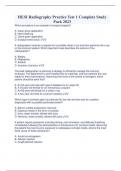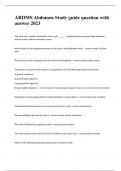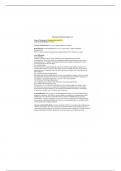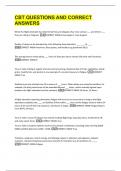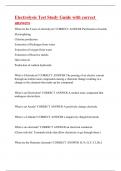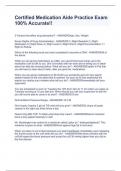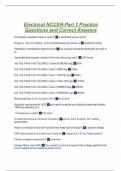Hazardous Environments (Case Studies)
Advanced Physical Geography Options
Cambridge International AS and A Level Geography
For Syllabus 9696
Case Studies
➢ Haiti’s 2010 Earthquake
➢ Japan’s Earthquake and Tsunami, 2011
➢ Lake Nyos (Cameroon) Deadly Gas Cloud
➢ Puerto Rico’s Landslides
➢ Italian Mudslides, 1998 (Human Causes)
➢ Venezuelan Mudslides
➢ European Avalanches, 1999
➢ Cyclone Nargis and Burma’s (Myanmar) Recovery, 2008
➢ Indiana’s (USA) Tornadoes
➢ Experiment – Effectiveness of geo-materials for slope sustainability
➢ Montserrat’s sustainability with its Hazardous Environments
Case Study: Earthquake in Haiti- 12 January 2010
Haiti occupies Western
part Hispaniola
(Caribbean Island
shared with Dominican
Republic). It is located
East of Cuba.
characterised by
poverty, environmental
degradation, corruption
+ violence.
12 January 2010, quake
7.0 Richter scale hit 25
km S-W Port-au-Prince
,2
depth 13 km. Aftershocks strong as 5.9 9 km below surface + 56 km S-W of city ⅓ of pop
affected. 300,000 people died, 250,000 injured + 1 million homeless.
Hispaniola sits on Gonave microplate (small strip of crust squeezed between N. American +
Caribbean tec plates). Vulnerable to rare violent quakes. DR suffered serious quake 1946.
Enriquillo-Plantain Garden fault accumulating stress since prior quake (more than century
inactive). 2 things magnified destruction:
- Power - epicentre 25 km S-W Port au Prince.
- Focus 13 km below.
Region Ill suited withstand shaking. Most Port au Prince 2 million residents live in unstable tin
shacks on unstable steep ravines. 60% buildings poorly constructed unsafe even under normal
conditions.
Red Cross est. 3 million people (⅓ Haiti's pop) need emergency aid. 7 days after quake UN
managed get food 200,000 people. Help (doctors, sniffer dogs, tents, blankets, food) brought
from Mexico, Venezuela, China, UK, France, Germany, Canada, Cuba.
Financial assistance poured in. UN released $10 million from emergency fund + EU countries
pledged $13 7 million. Haiti's institutions weak before disaster. Quake devastated capital, gov +
UN (tried build state in Haiti since 2004) affected as lost buildings + essential staff.
. Following quake plans discussed for rescue, rehabilitation + reconstruction of country. Difficult
as money invested in Haiti failed remove poverty, crime + corruption. Since 2000 $4 billion
given to Haiti to rebuild communities + infrastructure devastated by trop storms, floods +
landslides. Mismanagement + lack coordination to attempt frustrated all efforts. Foreign debt
of $1.5 billion weighed down economy.
, 3
Case Study: Japan's earthquake and Tsunami, 2011
Occurred off east coast of
Japan 2011. Had magnitude
9.0M. Epicentre approx 70
km east Tohoku at depth
30km. Was most powerful
quake to ever hit Japan, 4th
most powerful since 1900.
Quake caused Tsunami that
generated waves +12 m,
killed thousands + damaged
Sendai area. 16,000 deaths,
2,500 missing + 225,000
forced live in shelters.
125,000 buildings collapsed
+ 1 million damaged.
Quake + Tsunami caused
widespread + structural
damage to roads + railways. 4.4 million households N-E Japan left without electricity + 1.5
million water. Tsunami caused accidents at nuke stations in Fukushima.
Insured losses from quake alone = US$ 14.5-34.6 billion. World Bank estimates economic cost
US$235 billion, making costliest natural disaster ever.
One minute before quake felt in Tokyo, early warning system sent alerts to millions people
(believed that saved many lives). Tsunami began hit coastline 10-30 m later after main quake.
Damage from Tsunami greater. Many waves higher than walls. People had false sense security.
90% people drowned. Victims over 60 accounted 65% of deaths. Number of children became
orphans.
Japan invested equivalent billions of dollars on anti-tsunamis sea walls along at least 40% of
35,000km coastline. Tsunami washed over top of seawalls or collapsing. 10% Japan's fishing
ports damaged.



